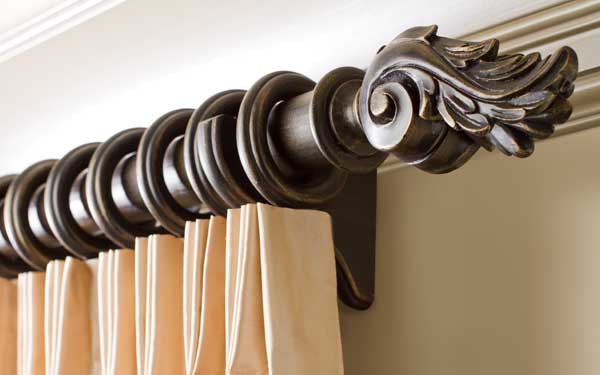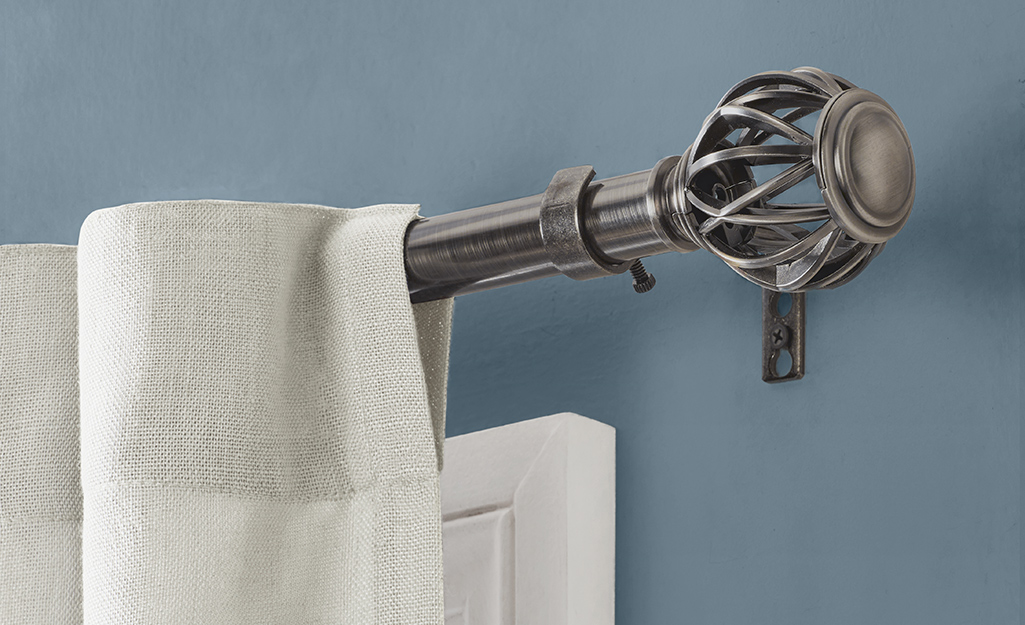Decorative drapery rods can transform a simple window treatment into a stunning focal point in any room. As someone who has frequently updated home decor, I can attest to the impact that well-chosen drapery rods can have on a space’s overall vibe. In this comprehensive guide, we will explore various styles, materials, and installation techniques for decorative drapery rods, along with practical tips drawn from personal experiences.
What Are Decorative Drapery Rods?
Decorative drapery rods are window treatment hardware designed to support curtains or drapes while adding a decorative element to your decor. They come in various styles, lengths, and finishes, allowing homeowners to match their existing decor theme.
Why Choose Decorative Drapery Rods?
Choosing decorative drapery rods can significantly enhance your home’s aesthetic. Here are some reasons to consider:
- Aesthetic Appeal: They come in various styles, from modern to classic, allowing you to find the perfect match for your decor.
- Functional Benefits: They provide functional support for heavier drapes, ensuring they hang properly.
- Easy to Install: Most decorative rods come with simple installation instructions.
Types of Decorative Drapery Rods

1. Single Rods
Single rods are the most common type, used primarily for lightweight curtains. They are versatile and come in various styles and materials.
2. Double Rods
Double rods allow for layered window treatments, enabling you to hang a sheer curtain underneath a heavier drape. This creates depth and adds interest to your windows.

3. Tension Rods
Tension rods are typically used for lightweight curtains in areas like bathrooms or kitchens. They are adjustable and do not require permanent installation.
4. Decorative Curtain Poles
These rods are thicker and often designed with intricate finials (end caps). They add a bold statement to any window treatment.

Comparison Table: Types of Decorative Drapery Rods
| Type | Ideal Use | Pros | Cons |
|---|---|---|---|
| Single Rod | Lightweight curtains | Versatile, easy to install | Limited to one fabric layer |
| Double Rod | Layered treatments | Adds depth, visual interest | More complex installation |
| Tension Rod | Temporary or lightweight setups | No wall damage, easy to install | Limited weight capacity |
| Decorative Curtain Pole | Heavier drapes | Sturdy, stylish options | Can be expensive |
Key Materials Used for Decorative Drapery Rods

1. Wood
Wooden rods offer a warm and classic look. They can be stained or painted to match your decor. However, they usually require more maintenance than metal rods.
2. Metal
Metal rods are modern and sleek. They come in finishes like brushed nickel, oil-rubbed bronze, and wrought iron, providing a contemporary look that is easy to maintain.

3. Composite Materials
These rods are often made to look like wood or metal but are lighter and more affordable. They can be a great option for those on a budget.
Pros and Cons of Materials
| Material | Pros | Cons |
|---|---|---|
| Wood | Classic look, warm finish | Requires maintenance, can warp |
| Metal | Durable, modern styles | Cold appearance, can dent |
| Composite | Lightweight, affordable | Less durable, limited style options |

Choosing the Right Decorative Drapery Rods for Your Home
1. Consider Your Decor Style
Your choice of drapery rods should complement your home’s decor. For modern interiors, sleek metal rods work well, while traditional homes may benefit from elegant wooden rods.
2. Measure Your Windows
Accurate measurements are essential to ensure your rods fit perfectly. Measure the width of your window and add extra inches for a wider look.
3. Select Appropriate Weight Capacity
Ensure that the rods can support the type of curtains you plan to hang. Heavier drapes require sturdier rods, like those made from metal or thick wood.
Installation Tips for Decorative Drapery Rods
- Gather Tools: Ensure you have all necessary tools, including a drill, measuring tape, and level.
- Mark Your Placement: Use a pencil to mark the desired height and width on the wall.
- Drill Holes: Follow the manufacturer’s instructions and drill the necessary holes for brackets.
- Attach the Brackets: Secure the brackets first before placing the rod.
- Hang Your Curtains: Finally, hang your curtains and adjust them as needed.
Decorative Drapery Rod Trends in 2023
As with all decor elements, drapery rods also see trends that evolve each year. In 2023, here are some popular styles:
- Mixed Materials: Combining wood and metal for a unique and eclectic look.
- Bold Finials: Using oversized or uniquely shaped finials to make a statement.
- Minimalist Designs: Simplistic rods that blend seamlessly with the decor.
Common FAQs About Decorative Drapery Rods
Q1: How do I clean my decorative drapery rods?
A1: Most drapery rods can be cleaned with a duster or a damp cloth. For metal rods, avoid abrasive cleaners to prevent scratches.
Q2: Can I use decorative drapery rods for outdoor curtains?
A2: Yes, but ensure the rods are made from weather-resistant materials to withstand outdoor conditions.
Q3: How high should I hang drapery rods?
A3: Ideally, hang rods about 4-6 inches above the window frame for a more expansive look.
Q4: Are decorative drapery rods adjustable?
A4: Many decorative rods are adjustable in length, but it’s best to check the product specifications before purchasing.
Conclusion
Decorative drapery rods are more than just functional; they are an essential aspect of home decor that can elevate your space. By understanding the different types, materials, and installation methods, you can choose the perfect rods to complement your style. From personal experience, I’ve seen how the right decorative rods can transform a room, creating an inviting atmosphere. So, embrace the world of decorative drapery rods and let your windows shine!